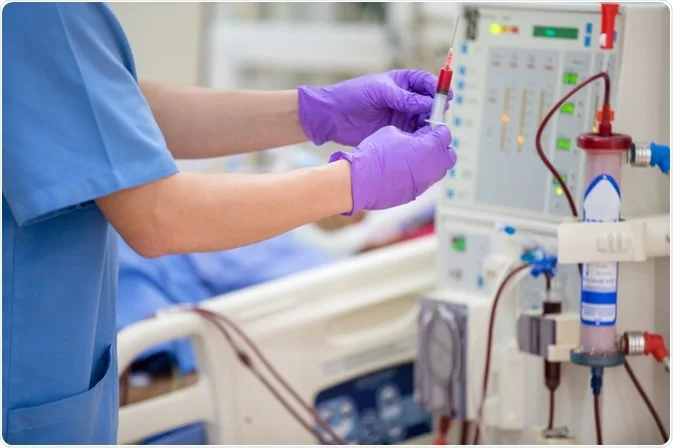Outline
-
Introduction
- Definition of Dialysis
- Purpose
- Brief History
-
Types
- Hemodialysis
- Process
- Frequency and Duration
- Peritoneal Dialysis
- Process
- Types (CAPD, APD)
- Hemodialysis
-
Who Needs it?
- Chronic Kidney Disease (CKD)
- Acute Kidney Injury (AKI)
- End-Stage Renal Disease (ESRD)
-
Benefits and Risks
- Benefits
- Risks and Complications
-
Living with this
- Diet and Lifestyle Changes
- Psychological and Emotional Impact
- Support Systems
-
Future Trends
- Innovations and Research
- Alternatives
-
Conclusion
-
FAQs
Introduction
Dialysis is a medical procedure that replicates kidney functions for individuals whose kidneys are no longer working properly. Its primary purpose is to remove waste products and excess fluid from the blood, tasks typically performed by healthy kidneys. The practice of this has evolved significantly since its inception in the 1940s, becoming a vital treatment for those with severe kidney conditions.
Types
There are two main types: hemodialysis and peritoneal dialysis. Hemodialysis involves circulating the patient’s blood through a machine that filters out toxins and excess fluids before returning the cleaned blood to the body. This procedure typically occurs three times a week and lasts about four hours per session. Peritoneal , on the other hand, uses the lining of the abdomen (peritoneum) as a natural filter. A cleansing fluid called dialysate is introduced into the abdominal cavity through a catheter, absorbing waste products and excess fluids over several hours before being drained. Peritoneal dialysis can be performed manually throughout the day (Continuous Ambulatory Peritoneal Dialysis, CAPD) or automatically at night (Automated Peritoneal Dialysis, APD).
Conclusion
Dialysis is a critical lifeline for individuals with impaired kidney function, offering a means to manage their condition and maintain a reasonable quality of life. While it presents certain challenges and risks, advancements in medical technology and treatment strategies continue to improve the efficacy and safety of dialysis. Understanding the different types of dialysis, the indications for its use, and the lifestyle adjustments required can empower patients and their families to make informed decisions about their healthcare.
FAQs
Q1: How long can someone live on this? A: Many people can live on this for several years. Life expectancy varies depending on individual health conditions, adherence to treatment, and lifestyle factors.
Q2: Is it painful? A: This itself is generally not painful, but some patients might experience discomfort from needle insertion during hemodialysis or from the catheter in peritoneal dialysis.
Q3: Can the patients travel? A: Yes, with proper planning, the patients can travel. There are many centers worldwide, and portable machines are available for peritoneal dialysis.
Q4: What dietary restrictions are associated with dialysis? A: The patients often need to limit intake of potassium, phosphorus, sodium, and fluids. Specific dietary recommendations should be provided by a healthcare professional.
Q5: Are there alternatives to this? A: The primary alternative to this is a kidney transplant. However, not all patients are candidates for transplantation, and finding a suitable donor can be challenging.

